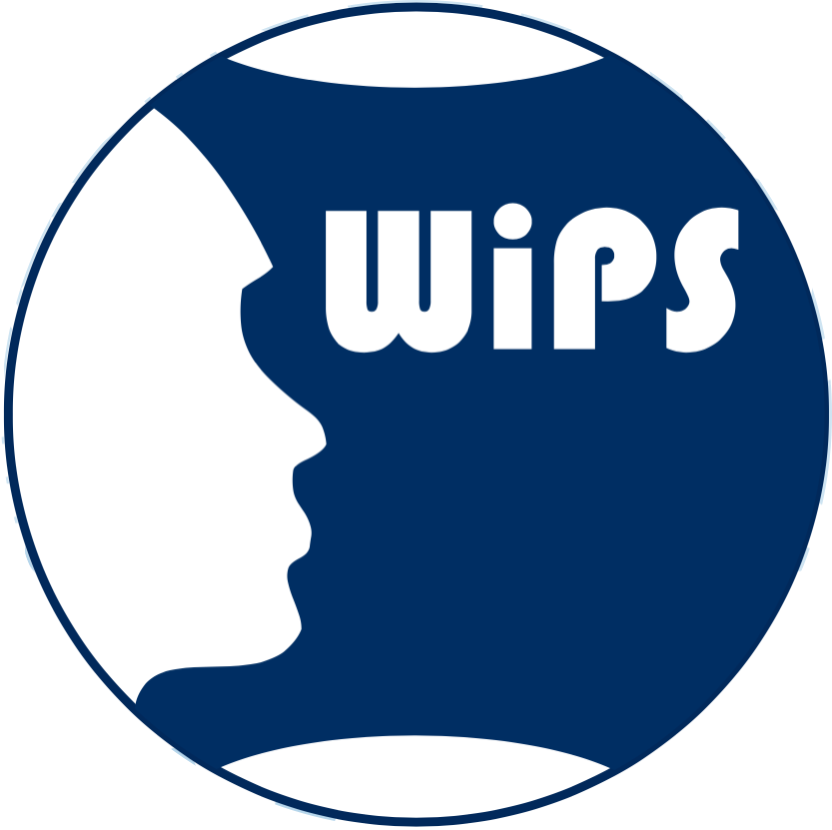Meet 100 Women in Polar Science and Support!
We’re collecting stories from 100 global women in polar employment, both polar science and non-academic polar roles. Check them out here – updated weekly!
Our thanks to the Curtis and Edith Munson Foundation for funding this project, The Ocean Foundation for acting as the US fiscal sponsor, and the Scientific Committee on Antarctic Research (SCAR) for their support.
Want to feature or know a cool woman who should? Contact us!
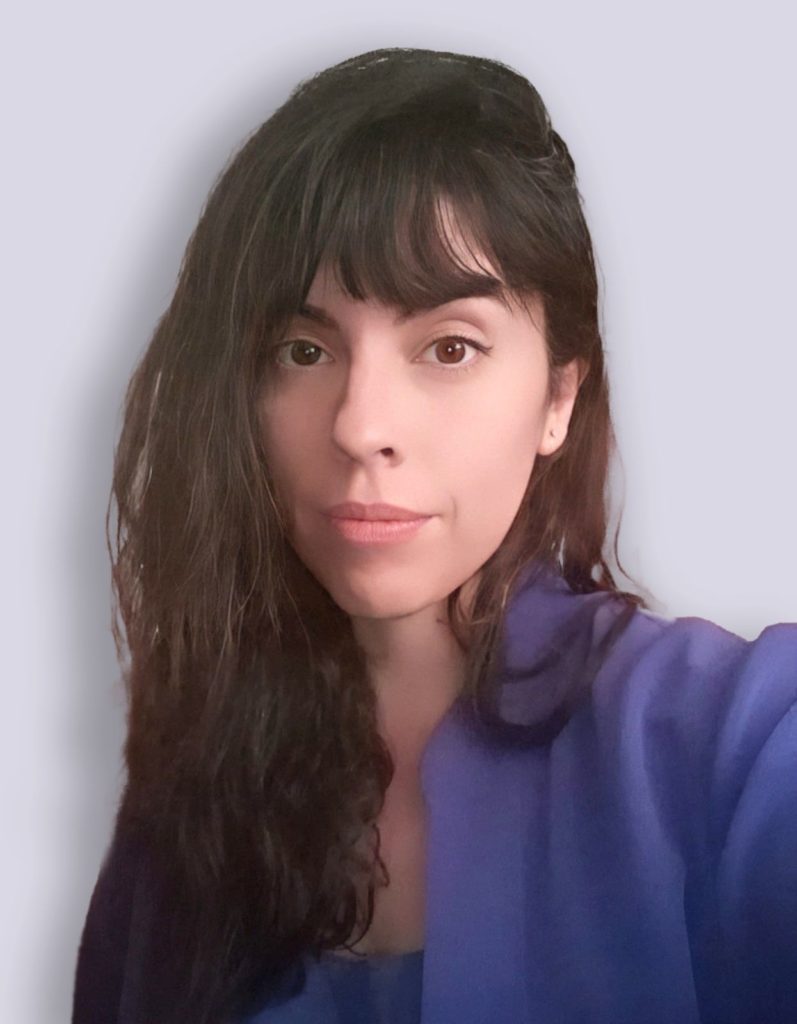
Isabel Giménez, MA
Discipline: International Studies
Age: 38
Nationality: Chile
Organisation: The Chilean Antarctic Institute, INACH (Chile)
Regional focus: Antarctic
What’s the work that you do?
My research areas include international cooperation and regional integration. Recently, I have been studying both issues in relation to climate change. More specifically, I am interested in investigating how international cooperation maintains and reinforces the Antartic Treaty’s status quo and its neutrality as a territory dedicated to science.
What keeps you going?
I am currently working on the organization of the SCAR Open Science Conference 2024, which will take place in Chile next year. What I like the most about my work is the number of international actors interested in addressing climate change. Being part of a project of this magnitude is challenging and extremely interesting due to these actors´ themes, proposals, and visions on climate change.
What’s your message to the world?
The impacts of human-made climate change are severe. Science and international cooperation among different actors is crucial to address this issue. Through more vigorous international collaboration, including the public, private, and academic spheres, we can achieve global resilience to the impacts of climate change.
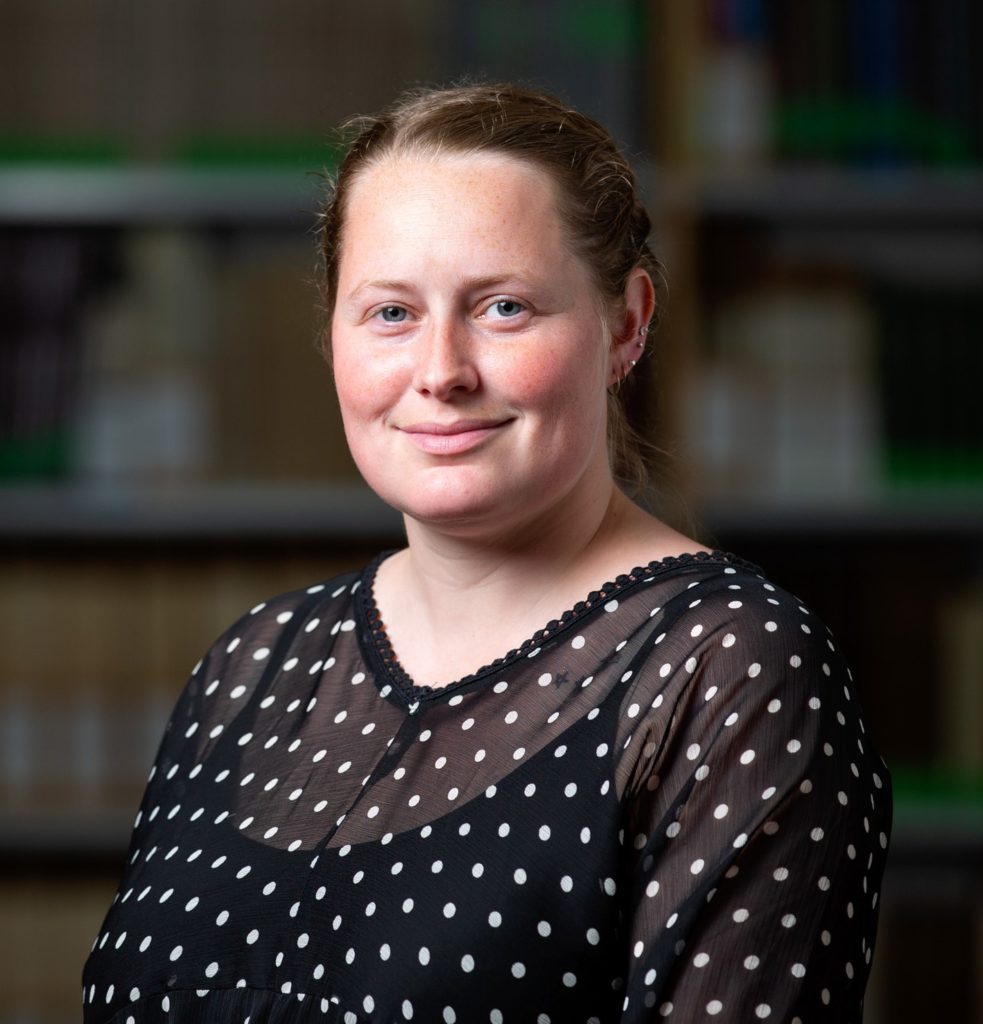
Mathilde Vestergaard Meyer
Discipline: Archaeology
Age: 29
Nationality: Denmark
Organisation: Aarhus University (Denmark)
Regional focus: Arctic
Social media: LinkedIn
What’s the work that you do?
I am a prehistoric archaeologist who is working on the role of children and toys in early-age innovation and subsequent adaptation during climatic changes. As a case study, I have been looking at the material culture related to children from the Thule Inuit and the Norse settlers in Greenland in the beginning of the Little Ice Age. I suggest that the stringent toys of the Norse played a part in their demise, while the diverse toys of the Thule helped the children to become skillful, innovative and adaptive adults, helping them thrive through the climatic changes of the Little Ice Age.
What keeps you going?
I have a huge interest for toys and children of the past, and I love being able to add to the notion of children being important actors and contributors in society, instead of being seen as mere passive agents. I believe that children were, and still are, important to all human societies, as it is the children who reproduce society in order for us to survive as a species.
What’s your message to the world?
Children matter! They should not be seen as passive, the way some societies often tend to picture them, but instead be seen as important actors on a level with the adults of the society.
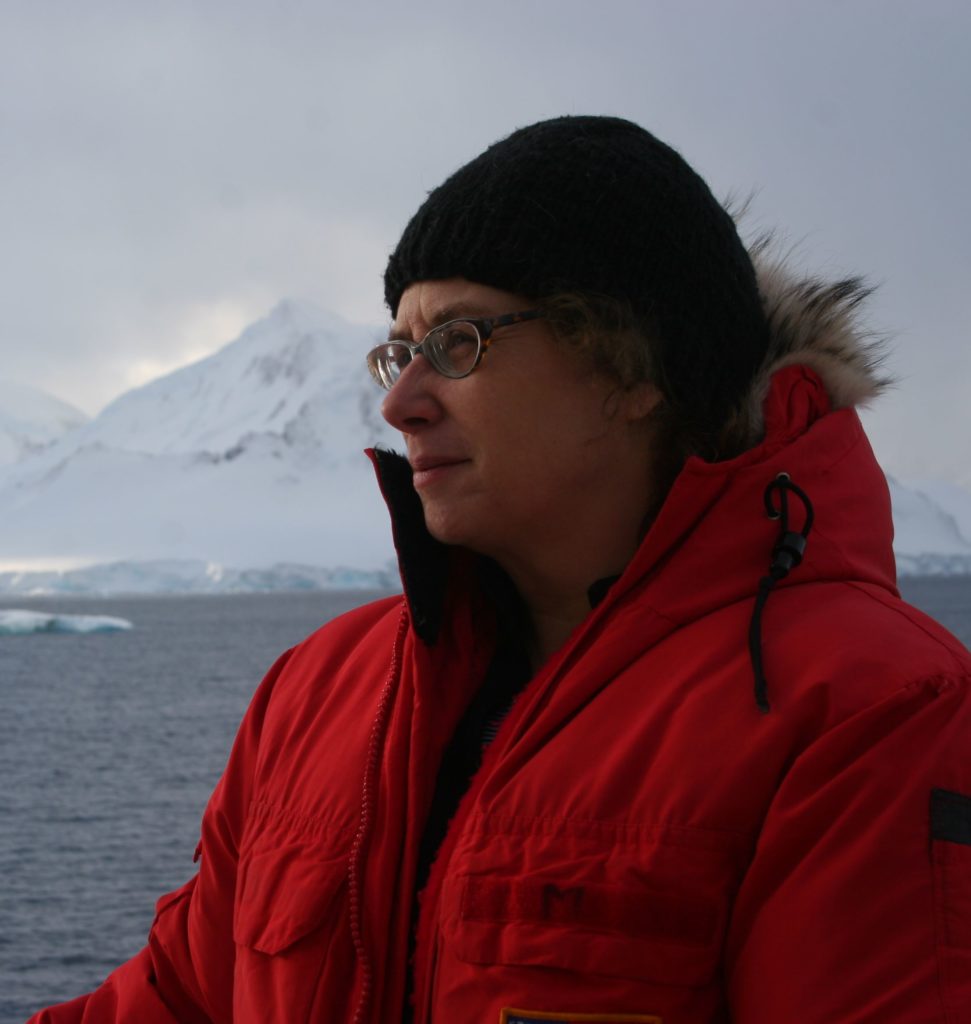
Karen Romano Young
Discipline: Science communication, children’s books, science comics
Age: 63
Nationality: USA
Organisation: Self-employed
Regional focus: Arctic and Antarctica
Social media: Website and website
What’s the work that you do?
(1) I write books about science research (Antarctica: The Melting Continent); (2) I research, write, and illustrate a regular science comic, #AntarcticLog, which covers climate change research, policy, education, and activism at both poles and worldwide, now in its 260th iteration; (3) I’m the founder and creator of I Was A Kid, a project designed to increase diversity in STEAM, with a particular focus on polar science. My work has made me part of three polar expeditions, to the Arctic (NASA ICESCAPE, 2010); to Palmer Station, Antarctica (NSF Antarctic Artists and Writers grant); and to the Amundsen Sea (IODP Expedition #379).
What keeps you going?
I use visual story and writing to portray the work and lived experience of people working in science and those who support them. My passion is to increase the number and diversity of young people learning about, gaining confidence in, and entering science fields, especially at the extreme latitudes. I believe in the importance of coordinating and connecting with Indigenous people and traditional knowledge. I bring a broad background in education and publishing, as well as art, to these fields, helping diversify it myself and through my books, comics, and education and outreach materials.
What’s your message to the world?
Science needs ALL the viewpoints. Up to about age 9, children are well supported in developing understanding and enthusiasm for the sciences. But research tells us that middle school is the key age for developing the science identity that comes from positive experiences and models that reflect personal background and interests, as well as multiple intelligences and viewpoints. Through presenting multimedia stories to young people, I am determined to help them understand what is happening at the poles and how it affects us worldwide — and to helping them see roles for themselves in these places and research efforts.
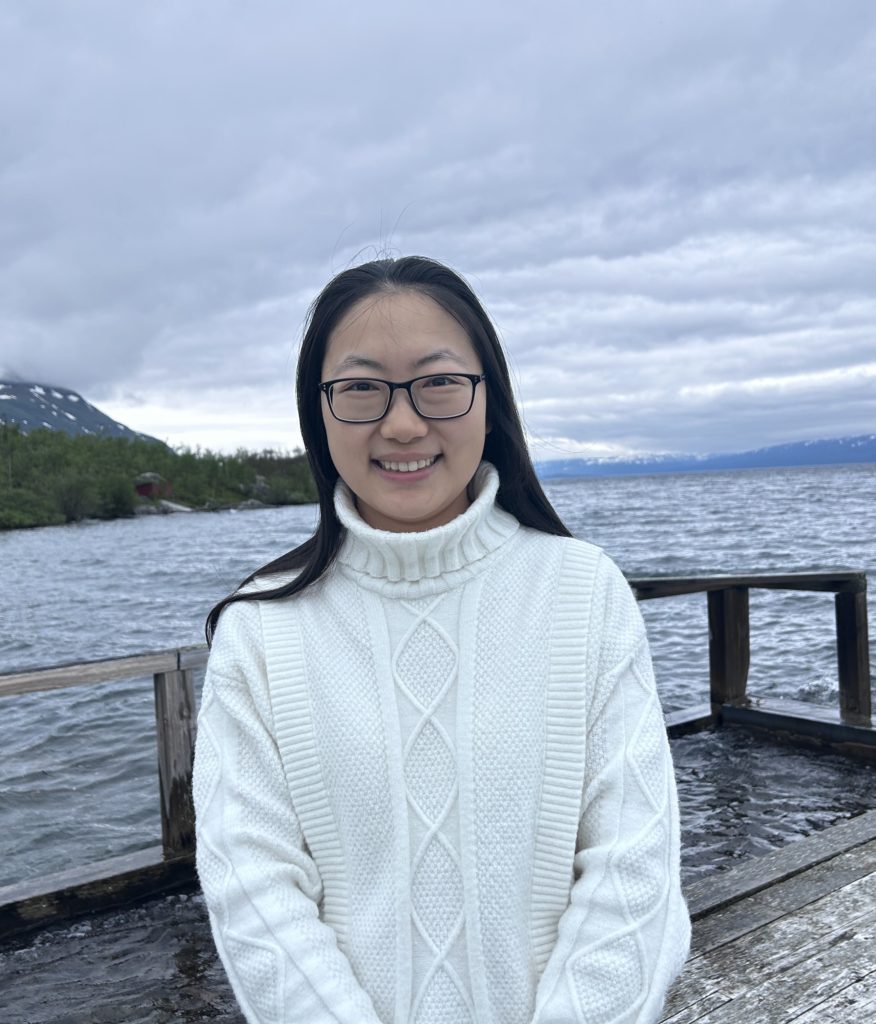
Wanying Zhang, PhD
Discipline: Polar biogeochemistry
Age: 30
Nationality: China
Organisation: Institute of Polar Environment, University of Science and Technology of China (China)
Regional focus: Arctic and Antarctica
Social media: Twitter and ResearchGate
What’s the work that you do?
My research focuses on trace gas biogeochemistry in polar ecosystems. Specifically, I investigate the exchange of reactive volatile gases containing halogen, sulfur, and nitrogen compounds between the atmosphere and polar environments like tundra, cryptogams, and sea animal colonies (such as penguins and seals). My goals encompass quantifying the sources and sinks of these environmentally significant gases, examining the controlling factors and mechanisms involved, and assessing and forecasting their environmental implications within the context of climate change.
What keeps you going?
For me, polar ecosystems represent the last untouched territories of our Earth, full of mystery and strength. These ecosystems go beyond being just stunning landscapes – they also give us glimpses into our planet’s well-being. Their reactions to climate change give us valuable clues about where global climate patterns are heading, like an early warning prompting us to pay attention. I’m truly thankful for the chance to explore such a significant part of our world.
What’s your message to the world?
Earth functions as a unified system. A shift in one corner sparks ripples throughout our shared habitat. Embrace the mission to explore and safeguard it – for every effort counts.
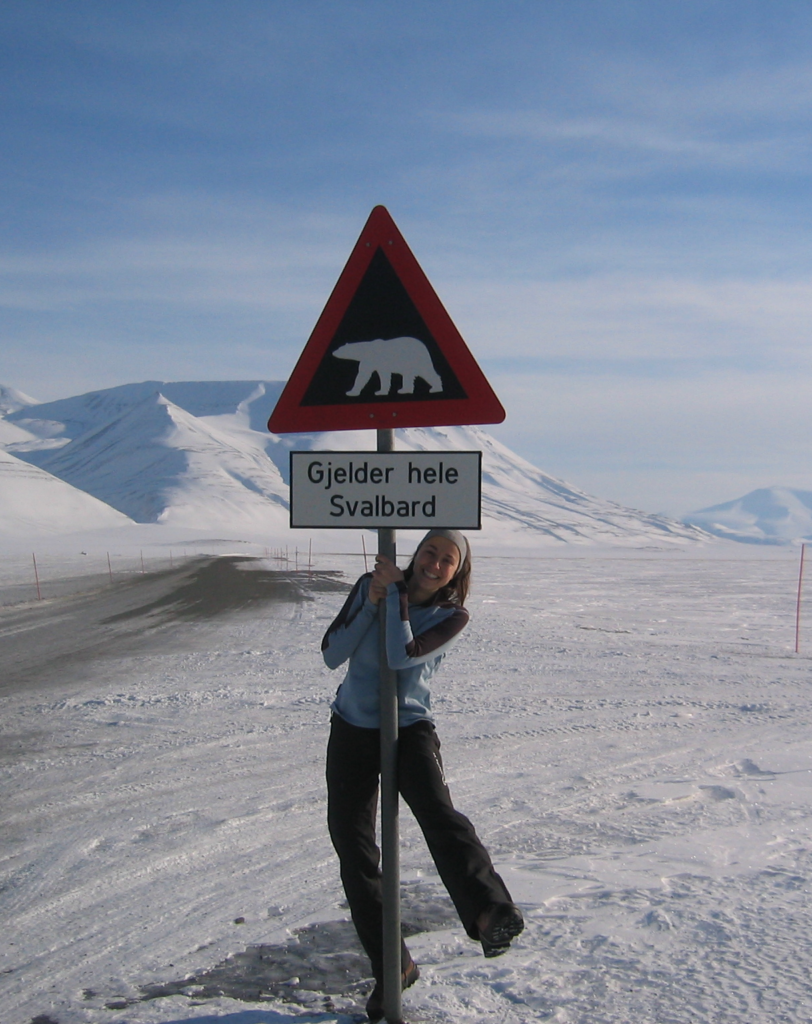
Cristina Prados-Roman, PhD
Discipline: Atmospheric sciences
Nationality: Spain
Organisation: Spanish National Institute for Aerospace Technology, INTA (Spain)
Regional focus: Arctic and Antarctica
Social media: LinkedIn and ResearchGate
What’s the work that you do?
As an atmospheric scientist, I mainly use remote sensing techniques to study the distribution of atmospheric gases and the link to their environment, including the polar environment. As a PhD student (Heidelberg University, Germany), I participated in aircraft campaigns based in the Arctic region (2007-2010). Since 2016, I work at the Spanish Institute for Aerospace Technology (INTA) and, in collaboration with the Argentinian Antarctic Institute and Meteorological Service, I have worked in several projects focused on Antarctica. Currently I’m co-PI of the GARDENIA project, funded by the Spanish Research Agency, that aims at studying gases and aerosols in the Antarctic atmosphere.
What keeps you going?
My very first research flight over the immensity of the Arctic sea ice gave me an unforgettable perspective of how unique, complex and fragile the pristine environments are. Since then, I have had the privilege of participating in airborne, ship and ground-based campaigns from the tropics to both poles addressing scientific questions such as natural and anthropogenic feedbacks in pristine environments. The exciting topics and the amazing people from around the world with whom I have the pleasure of collaborating drive my desire to keep on learning and sharing that knowledge.
What’s your message to the world?
Science is a never-ending learning process in which collaboration is essential. Research in polar regions takes this a step further not only because of how inaccessible these places often are (which greatly complicates the logistics of research). Polar research can benefit greatly from multi- and interdisciplinary approaches. Studying atmospheric chemistry in the poles without taking into account, for example, the unique characteristics of the sea ice, ocean or snow on which that atmosphere sits, or without considering the physical processes that govern the vertical distribution of the atmospheric composition can only provide a partial view of a much more complex scenario. Partial views can only tackle partial issues.
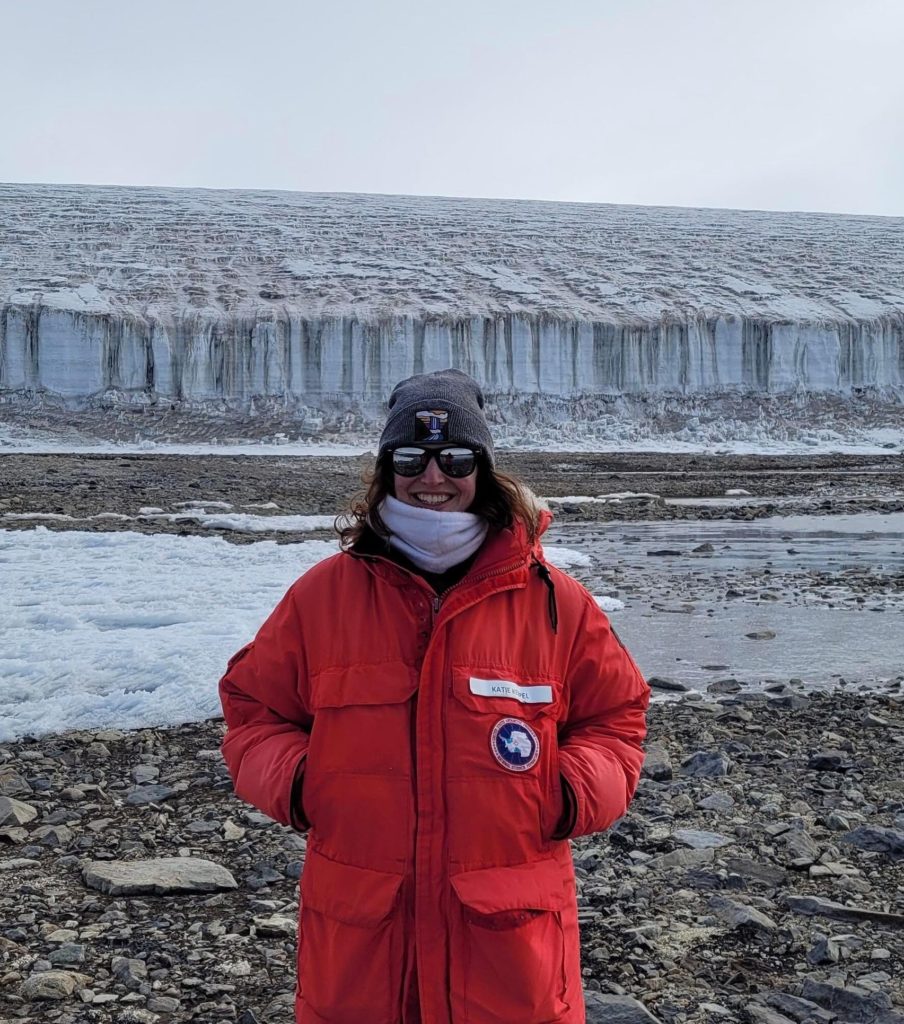
Katie Kerpel
Discipline: Broadcasting & Illustration
Age: 32
Nationality: USA
Organisation: Antarctic Support Contract (ASC) for the USAP
Regional focus: Antarctica
Social media: Website and Instagram
What’s the work that you do?
I am currently the broadcast engineer at McMurdo Station but I am an illustrator and artist by trade. In this position, I support the moral of the station- I play movies daily, make sure the tv and radio channels are working and train people to be radio DJs. It may not seem impressive, especially in the age of streaming media, but in a place where the internet can still be frustratingly slow, our tv stations are much more reliable. In my off-time, I boost moral in artistic ways: I have created murals and had art shows around station, which brighten up otherwise sterile environments.
What keeps you going?
There is always a chance to learn something new here. I’ve had opportunities where I can talk to scientists one on one, as well as learn from tradesmen on how the station operates. Through my job, I get to learn about people’s tastes in music and film. As an artist, this is truly an inspiring place. I’m constantly in awe whenever I am outside and the landscapes have proven to be amazing muses.
What’s your message to the world?
Community is everything. Being supportive and open to the ones around you makes all the difference. You never know what anyone is going through or what mood they are in, so always err on the side of kindness.

Beth Langley
Discipline: Polar marine science
Age: 26
Nationality: UK
Organisation: University of Glasgow (Scotland)
Regional focus: Arctic and Antarctica
Social media: Twitter and LinkedIn
What’s the work that you do?
I’m a PhD student researching carbon storage in Arctic marine sediments. With the Arctic warming up to 4 times faster than global averages, I’m interested in how increased temperatures may affect carbon storage in marine sediments. Recently, my work has involved participating in a research cruise sailing in and around the West coast fjords of Greenland where I collected seafloor sediments to investigate rates of carbon remineralisation and which microbes are responsible for carbon breakdown. This research will help us explore the future potential capacity of these sediments to act as efficient carbon sinks in a changing world.
What keeps you going?
The Arctic is a breathtakingly beautiful corner of our world, yet it is facing increasing pressures from human activity. I am driven to work in these regions to witness and experience this untamed beauty whilst there is still time. My first trip to the Arctic was awe-inspiring, leaving a mark of inspiration that propels my ongoing dedication to work in these areas. I want to be part of the crucial endeavour to protect and conserve these vulnerable landscapes.
What’s your message to the world?
Step out and explore the wonders of our extraordinary planet. Seek to understand it, respect it, and unite in the collective effort to safeguard our precious world.
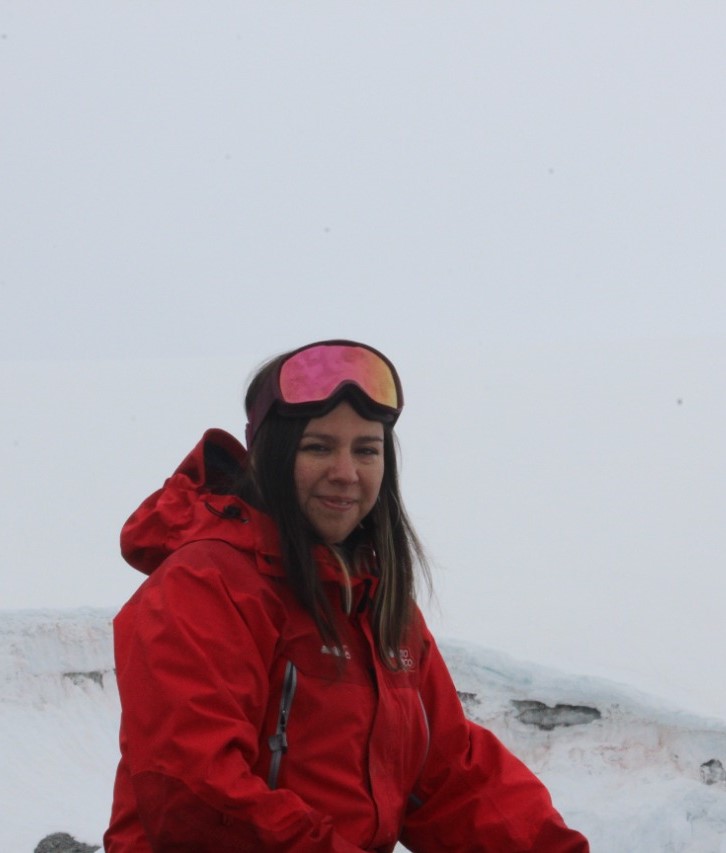
Victoria Gómez, PhD
Discipline: Environmental science
Age: 34
Nationality: Chile
Organisation: Universidad Mayor (Chile)
Regional focus: Antarctic
Social media: Instagram and LinkedIn
What’s the work that you do?
My line of research is persistent organic pollutants (POPs) and emerging pollutants (ECs) such as microplastics in biotic and abiotic matrices mainly. At the moment I am a Postdoctoral Researcher at the Universidad Mayor, focused on determining the sources and destination of atmospheric persistent organic pollutants in the Antarctic Peninsula.
What keeps you going?
I love nature, and I am passionate about caring for the environment. I enjoy both fieldwork and laboratory work. I am particularly interested in atmospheric pollution and how it interacts with water, sediments, and organisms. I strive to understand the interconnectedness of everything and how each of our actions as human beings impacts even the most remote areas of our planet.
What’s your message to the world?
I always imagined the poles as untouched landscapes, where ice and snow create a mesmerizing dance, and where wildlife perseveres through thick and thin. But those landscapes are much more beautiful and overwhelming than I ever thought. In the midst of beauty there is a delicate balance, because what happens in these remote lands resonates deeply in the heart of our planet and what happens in the rest of the planet resonates deeply in these remote lands. Polar ice, like a planetary thermostat, influences our climate and ocean and atmospheric currents. The journey of each iceberg, the sigh of each melting piece of ice, whispers to us a world shaped by intricate and profound forces. The pollution of large cities also reaches the poles via the ocean currents and the atmosphere. As I ventured into these lands, I was reminded of the energetic explorers of the past who dared to venture into these icy realms. Their indomitable spirits reflect humanity’s relentless pursuit of knowledge and discovery. Through their stories of triumph and adversity, we glimpse our shared longing to unravel the mysteries that shroud the far reaches of the world, and even to this day many of us continue to do so, rekindling our sense of wonder, venturing into these frozen lands, not as mere observers, but as compassionate custodians, spreading our knowledge.
Dear all, I beseech you to rekindle your sense of wonder and kindle the flames of curiosity. Let your actions resound with the understanding that we are bound by invisible threads, our destinies woven together inextricably.
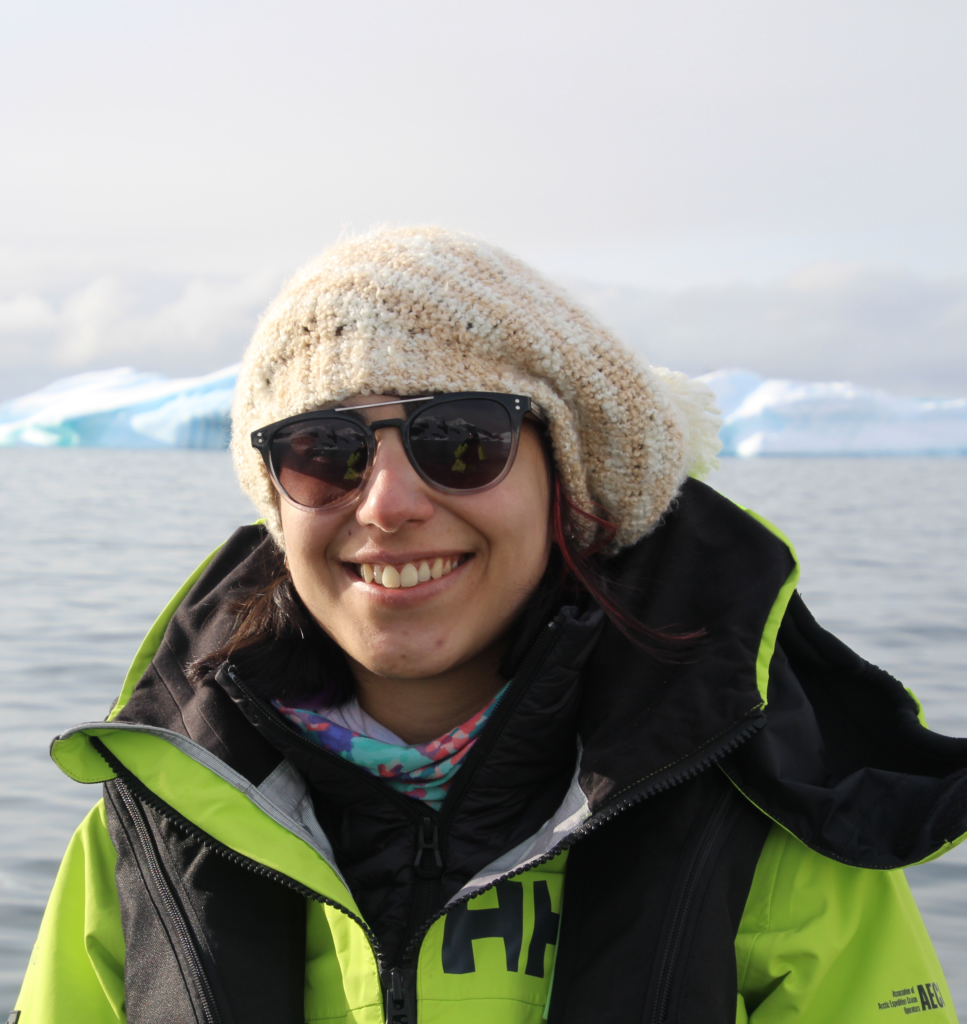
Martina Mascioni, PhD
Discipline: Phytoplankton ecology
Age: 29
Nationality: Argentina
Organisation: Universidad Nacional de La Plata (Argentina)
Regional focus: Antarctic
Social media: Instagram and Twitter
What’s the work that you do?
I am a phytoplankton ecologist and taxonomist, which means I work on identifying Antarctic microalgae drifting in the sunlit ocean. I then try to understand how these microalgae change through time and space due to changes in environmental conditions. I spend hours counting and identifying phytoplankton in water samples under a microscope. I am also a teaching assistant at the university teaching protist and fungal biology to third year biology students.
What keeps you going?
I love my job and I am passionate about nature and conservation. I can spend hours looking at the microscope but I also enjoy the time working in the field. One of the things that inspires me is teaching and doing outreach. Sharing what I do in the lab with the rest of society and having people understand how important my work is gives meaning to my research. One of the things I love as a researcher in the FjordPhyto citizen science project is working on tourist ships doing sampling on board and giving informative talks to passengers.
What’s your message to the world?
“Life is a symbiotic and cooperative union that allows those who associate to succeed.” I really like this quote from Lynn Margulis. She was an amazing evolutionary biologist but also an amazing science communicator and an amazing woman. She has inspired me throughout my career as a biologist. This quote comes from microbiology but it applies to our everyday lives. In my research and in my life I always try to work with other people. I believe that we are social animals, and to be successful we need to work together.

Jane Chewings, MSc
Discipline: Senior Technical Officer – Earth Sciences; Hot Water Driller
Age: 47
Nationality: Aotearoa New Zealand
Organisation: Te Herenga Waka/Victoria University of Wellington (New Zealand)
Regional focus: Antarctic
Social media: LinkedIn
What’s the work that you do?
I’m a Senior Technical Officer in Geography, Environment & Earth Sciences. I manage a suite of sample preparation laboratories for research in geosciences, physical geography, environmental science, and related disciplines. My role is broad in scope, meaning I’m a “Jill of all-trades”. It includes a mix of technical oversight, training, teaching, research support, health, safety and compliance, repairs, maintenance, admin, and personnel management. Periodically, I also contract as a Hot Water Driller to our Antarctic Research Centre’s Science Drilling Office. The SDO design and operate bespoke systems for scientific drilling and coring used in polar research, mainly in the Antarctic.
What keeps you going?
I get heaps of enjoyment from teaching students laboratory methods and helping them achieve their research goals, which are diverse and many! They inspire me every day. In my Antarctic work, I enjoy being able to blend my scientific and technical knowledge and to contribute to ambitious, globally relevant research. I also like a technical challenge, like hot water drilling through 600 m of ice shelf. Working deep-field, almost as far south as you can get, is demanding but also an adventure, and an experience I feel incredibly grateful and fortunate to have.
What’s your message to the world?
Polar science can’t happen without logistical experts, tradespeople, pilots, ships’ crews, base staff, communications folk, and many other non-science personnel who may never set foot on continent. Without these people, scientific fieldwork in the most inhospitable place on the planet can’t happen. So, for every hard-won data point informing the world about what is happening at the poles, I’d like to thank these people. I also encourage as many women as possible to demand their place in polar programmes. More women equal better culture, better science, and better solutions. Polar women rock.
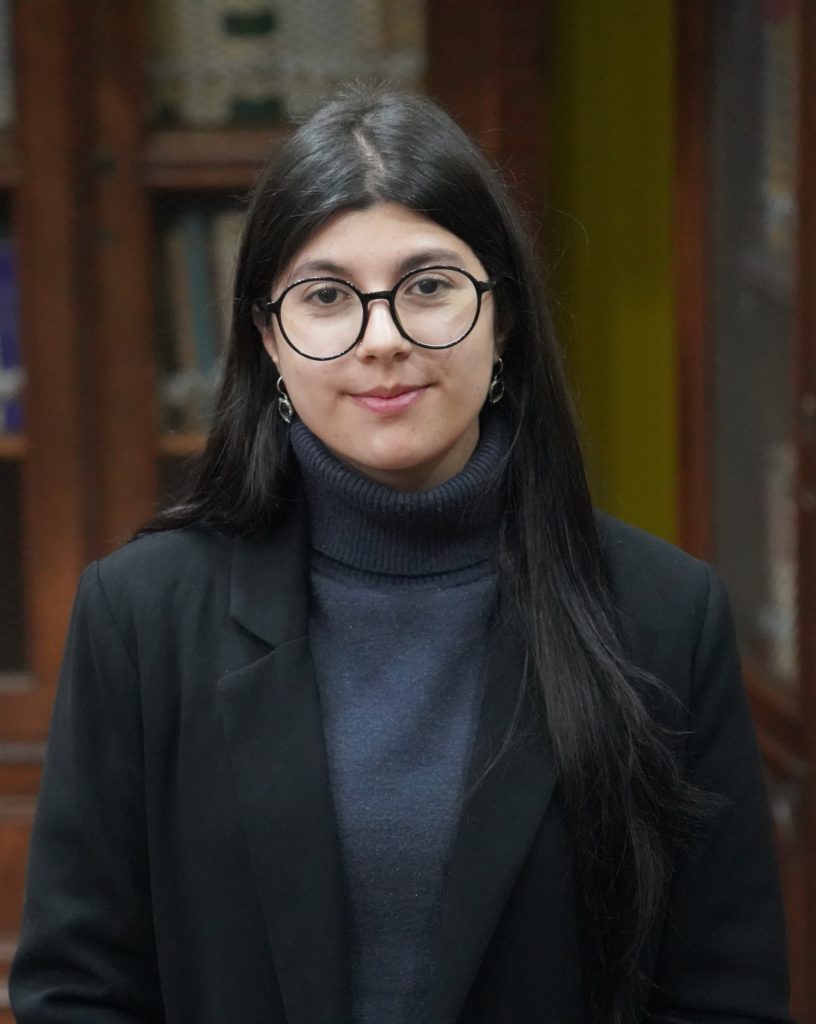
Giovannina Sutherland, LLB, BA
Discipline: Antarctic Law and International Law
Age: 28
Nationality: Chile
Organisation: University of Chile and Millennium Institute Biodiversity of Antarctic and Subantarctic Ecosystems/BASE (Chile)
Regional focus: Antarctic
Social media: LinkedIn and Twitter
What’s the work that you do?
I coordinate the Antarctic Studies Program at the Law School of the University of Chile. I’m also an affiliated researcher at the BASE Millennium Institute. Currently, my main lines of research are: 1) Is domestic law suitable for regulating matters of an international nature, in particular the Antarctic Treaty System? 2) Antarctic Chilean Territory in the new constitutional process; and 3) Comparative analysis of biosecurity regulations in the event of H5N1 avian influenza in Antarctica.
What keeps you going?
My work allows me to reinforce the study of Antarctic matters from the humanities and social sciences perspective. In particular, to investigate from the multidisciplinary exchange that addresses the challenges of the Antarctic Treaty System from law, international relations and political science, in order to work from the academy in proposals that contribute to the evolution of this legal regime. At the same time, I feel that I can vindicate the role of women in matters of polar governance through the coordination of the Antarctic Studies Program of the University of Chile, a community where 70% of the researchers are women.
What’s your message to the world?
The governance of the Antarctic Continent is one of the most important challenges of the future of humanity. We must work together to maintain peace and international cooperation in one of the most pristine and innocent places in the world.
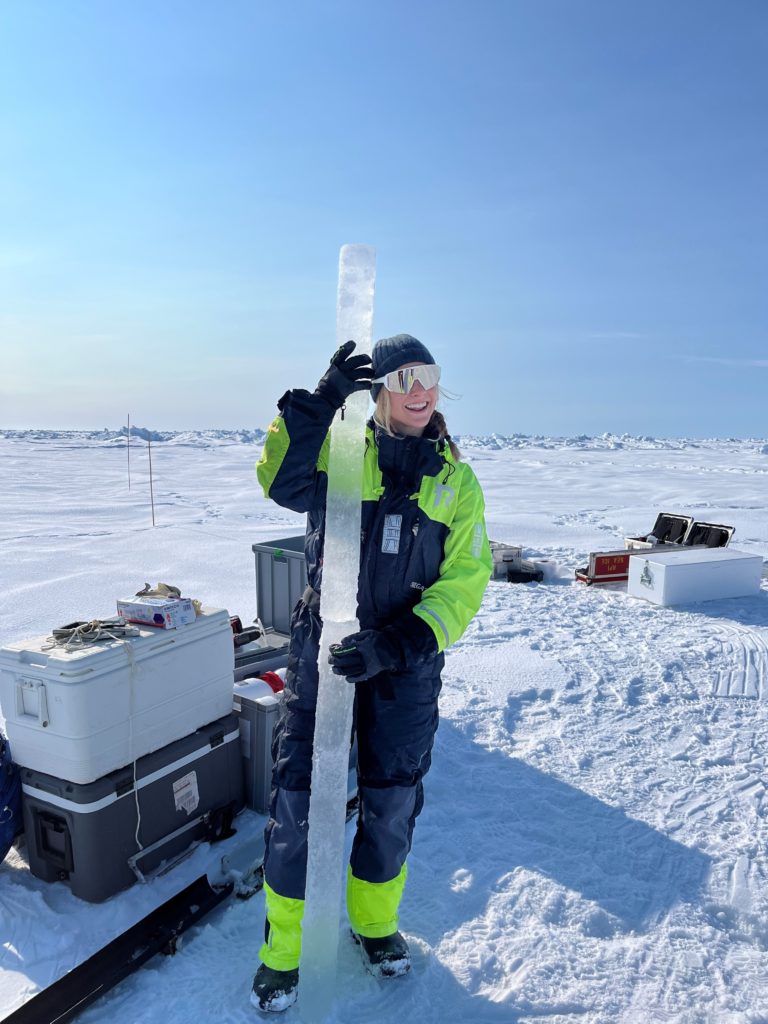
Megan Lenss
Discipline: Biological oceanography
Age: 24
Nationality: USA
Organisation: Norwegian Polar Institute/NPI and University of Tromsø/UiT (Norway)
Regional focus: Arctic and Antarctic
Social media: Facebook
What’s the work that you do?
I am a second year master’s student at UiT writing a thesis in collaboration with NPI on the biogeochemical controls of phytoplankton and ice algal growth in the King Haakon VII Sea, Southern Ocean. More broadly, I am interested in anthropogenic impacts on growing conditions for photosynthetic organisms in the Antarctic and the consequential impact this has on the role of the Southern Ocean in the global climate system. I have also worked for NPI as a laboratory technician on cruises associated with the SUDARCO project in the Eurasian sector of the Arctic Ocean.
What keeps you going?
As a student in polar science, most of my days are filled with endless questions. There is so much to learn both in and out of the classroom, in the lab and in the field. I love the blend of tough academic work with practical skills.
What’s your message to the world?
I feel science, at its core, is a profound communication tool. I believe physics, chemistry, and biology are akin to languages and that if I can learn some scientific fundamentals I can in some way communicate with earth systems that lack the same words you and I use to conversate. I feel a deep responsibility to turn scientific knowledge into public communication which bears witness to the complexity, vulnerability, and inherent worth of the polar regions. I am honored to be a part of this community, and I believe that we, as polar scientists, must champion climate justice at all levels.
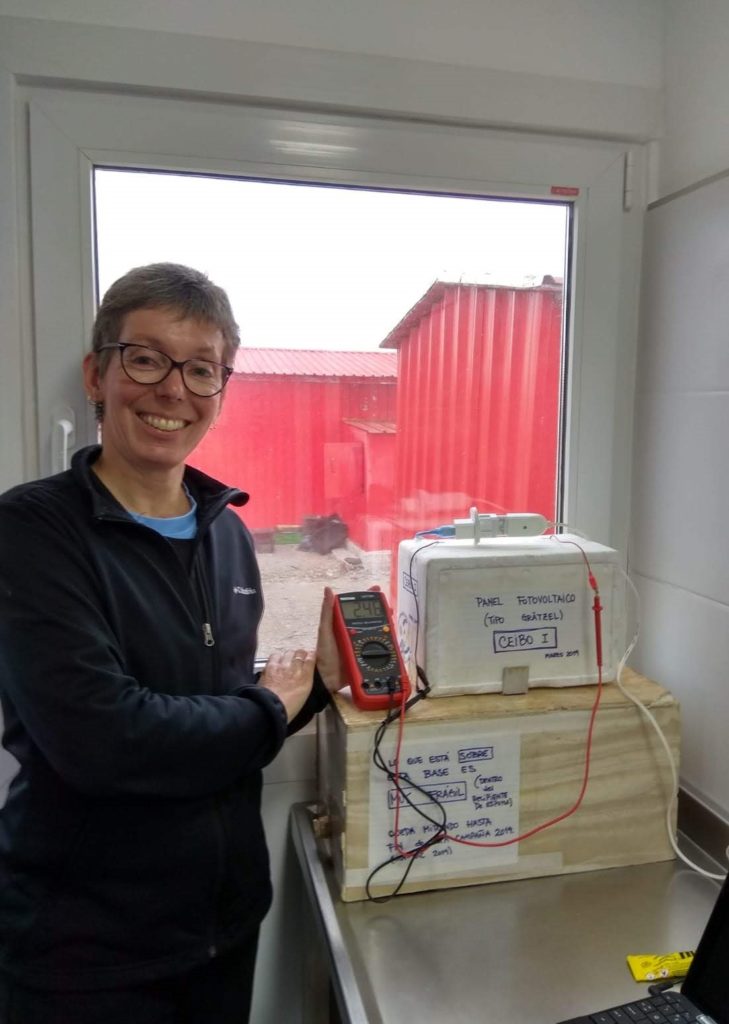
Fernanda Cerdá, PhD
Discipline: Green/renewable energy
Age: 56
Nationality: Uruguay
Organisation: Facultad de Ciencias, Universidad de la República (Uruguay)
Regional focus: Antarctic
Social media: Twitter
What’s the work that you do?
My work is focused on exploring the use of dyes extracted from Antarctic algae or produced by Antarctic bacteria as light-harvesters in solar cells. Dye-sensitized solar cells offer an alternative to transform sunlight into electricity, and as they are translucent, they can be placed indoors. Dye-based solar panels can be installed inside the Bases next to the windows, and they can produce electricity the whole year, including winter time; as they are placed indoors, they cannot be covered by snow, unlike silicon-based traditional solar panels.
What keeps you going?
To work at the university is what I really love. It involves research, and that is the thing I most like to do. To find new answers to questions and always a new question to solve is a great motor to move forward! Antarctica is a special place to protect, and we are still in time to do it. So to explore the use and application of renewables is an exciting topic. Teaching is also included in my work: having the chance to be in contact with young people and with their passion is a way to spread your own messages and ideas, learning simultaneously from their fresh points of view.
What’s your message to the world?
Antarctica is a special place to protect, and we still have time to achieve it. Electricity is related to human survival in such parts of the planet: we need it to supply the scientific bases. But changing the energetic matrix must be a priority, and I would like to imagine a future without carbon-based fuels in Antarctica.
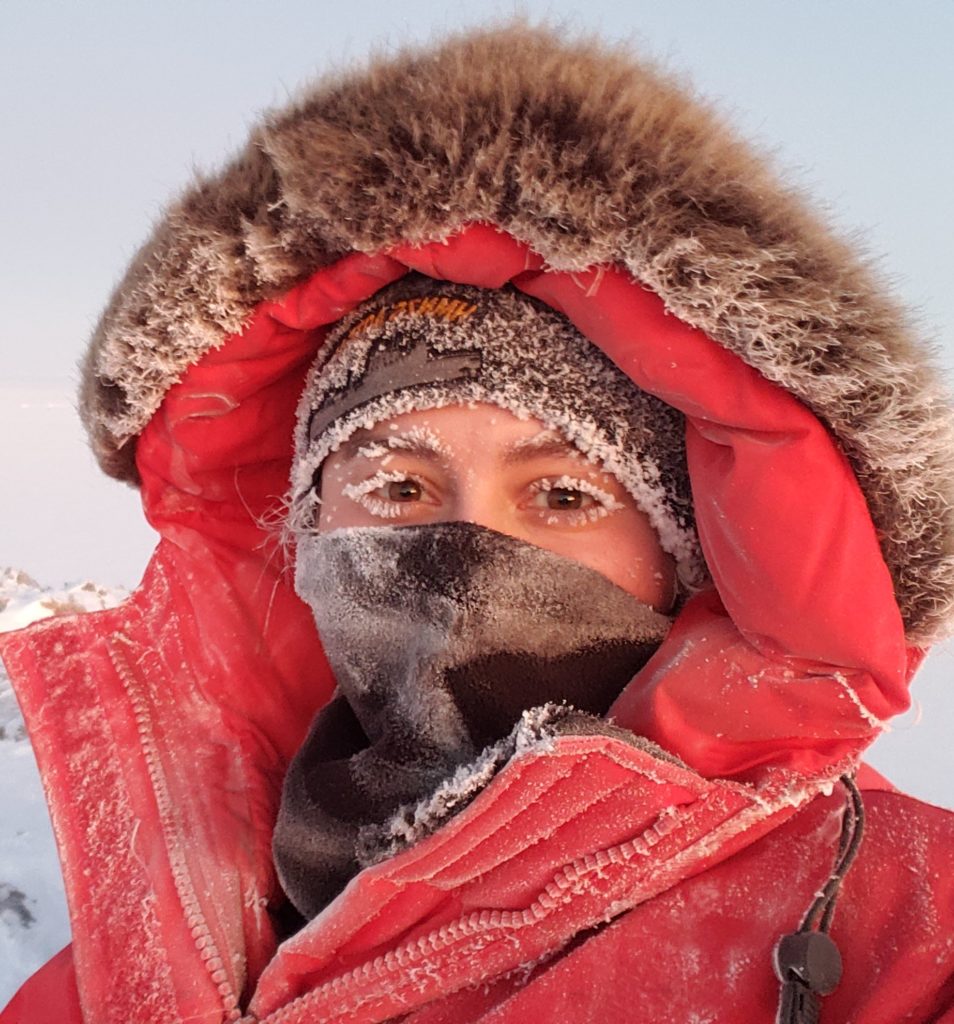
Jessica Bruce
Discipline: Field equipment specialist
Age: 29
Nationality: New Zealand
Organisation: United States Antarctic Program (USAP)
Regional focus: Antarctica
Social media: Instagram
What’s the work that you do?
What keeps you going?
I love being an integral part of the support of Antarctic science and research! The ever-changing landscape both geographically and politically has me keeping a keen focus on the Antarctic Continent for years to come. I feel a sense of belonging here in Antarctica as well as in Arctic regions, such as when I spent a season at the top of the Greenland Ice Cap. Polar regions offer a chance for you to enhance your imagination, and to grow in confidence with the vast array of opportunities available.
What’s your message to the world?
Follow your dreams, and don’t be afraid to choose a path less-taken. There is a vast world out there, just waiting to be explored.
Always keep a sense of adventure, and an open mind and you will learn a great deal!
It is worth noting, Antarctica is going through a period of great change, with the planet’s rising temperatures seen so vividly in the polar regions. We must all do what we can to offset our carbon footprint, and lessen our impact on pristine environments like Antarctica, and the Arctic. We want these amazing places to be available for future generations as well!
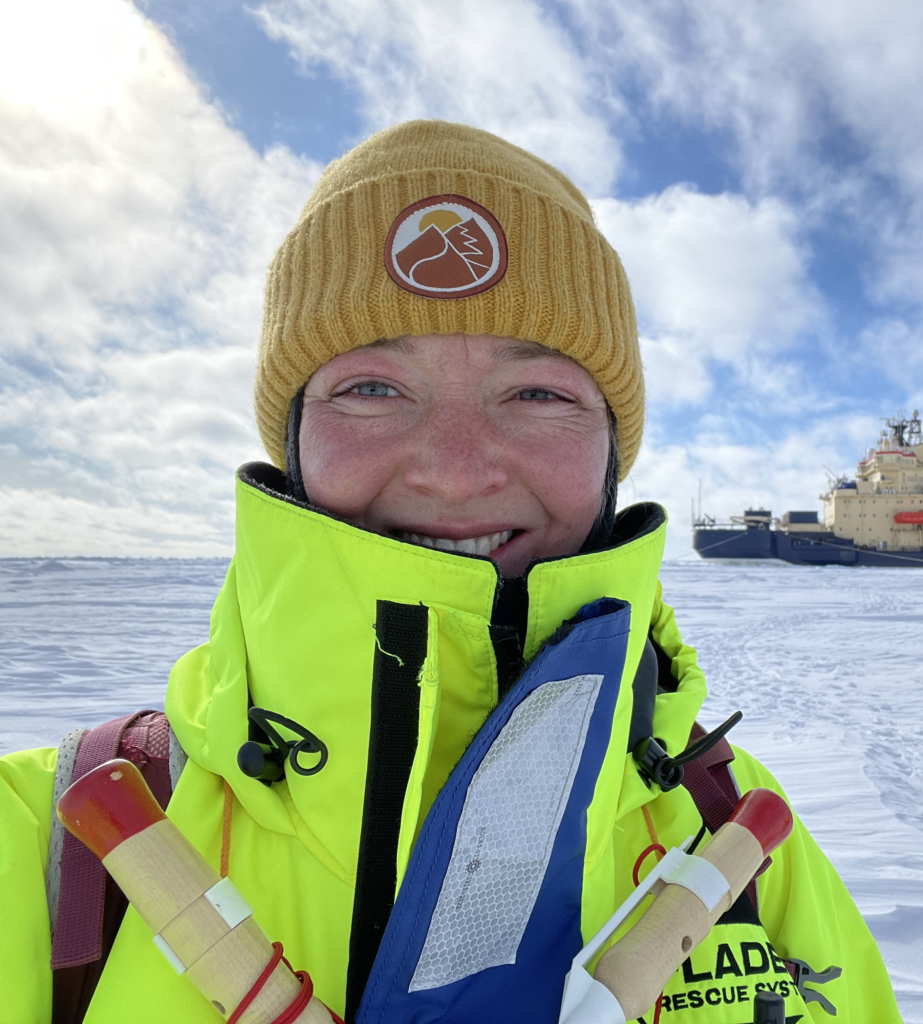
Theresa Mathes, MSc
Discipline: Environmental Chemistry
Age: 28
Nationality: Germany
Organisation: Technische Universität Berin (Germany)
Regional focus: Arctic
Social media: Instagram and LinkedIn
What’s the work that you do?
I am a PhD student currently working on turbulent aerosol fluxes in the central Arctic. Aerosol particles are a key component of the Arctic climate system. It is therefore important to identify and quantify Arctic particle sources and sinks, including vertical transport. During the expedition with the Swedish icebreaker Oden, I performed eddy covariance particle flux measurements and collected particle concentration profiles over different surfaces such as the open ocean surface, open leads and ice of different ages and thicknesses.
What keeps you going?
The different, sometimes extreme places where I get to work are the most beautiful I have ever seen and inspire or fascinate me. The people I meet on expeditions are unique. Working in these teams allows me to broaden my understanding and view of the world. I enjoy learning something new every day and being confronted with new challenges.
What’s your message to the world?
Longer periods of fieldwork encourage people to change habits and ways of thinking. Live authentically, be curious and seize new opportunities as they arise. Don’t pass the buck to others, take responsibility.
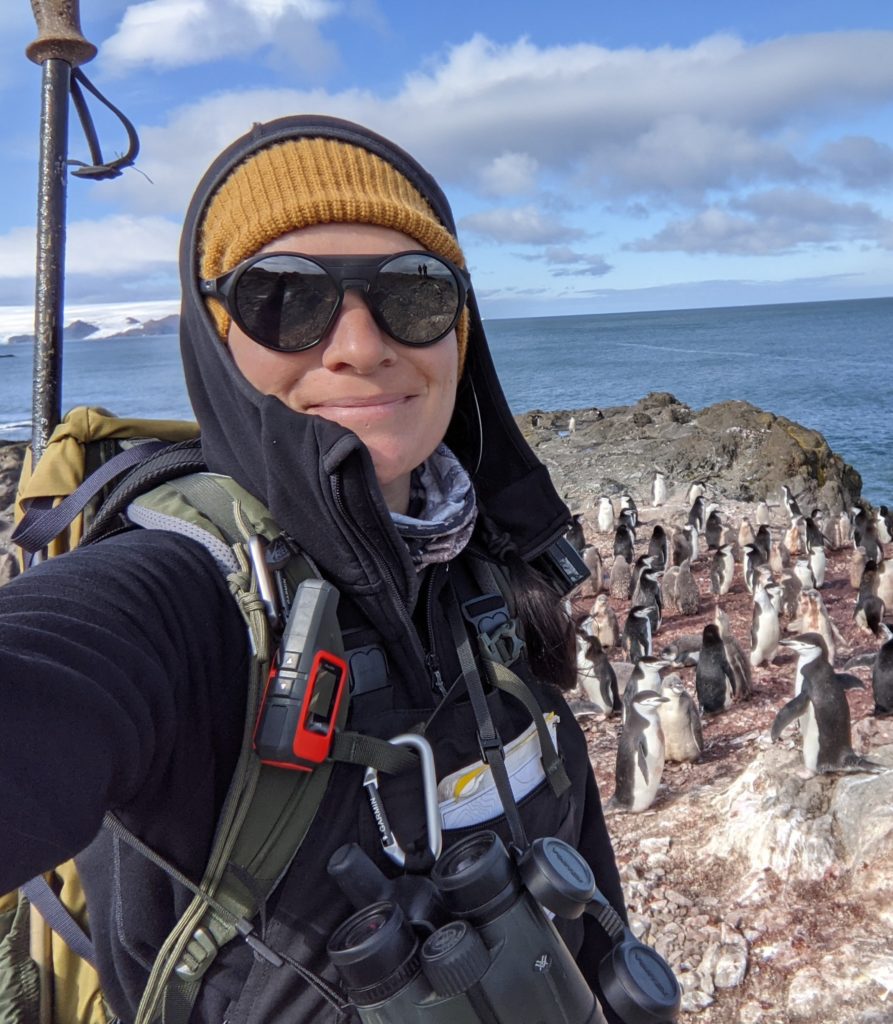
Tammy Russell
Discipline: Biological Oceanography
Age: 39
Nationality: USA
Organisation: Scripps Institution of Oceanography (USA)
Regional focus: Antarctic
Social media: Instagram and LinkedIn
What’s the work that you do?
My Antarctic research focuses on the foraging ecology and microplastic pollution exposure in all three species of brush-tailed penguin. I am the principal investigator on the Penguano Project, a collaborative effort between Scripps Oceanography, Birch Aquarium, and NOAA’s Antarctic Ecosystem Research Division that works to understand microplastic ingestion in brush-tailed penguins and how microplastics exposure is influenced by penguin diets.
What keeps you going?
I’ve been drawn to seabirds since I was a child, and now as a marine ornithologist, I get to think about and work on research on seabirds everyday; it is a dream come true! Seabirds are one of the most threatened groups of birds in the world, facing threats at sea, on land, and in the air. This is my motivation for my research, and inspires me to further understand the impacts of climate change and plastic pollution on these organisms I care about so much.
What’s your message to the world?
Antarctica is typically thought of as a frontier; a pristine habitat untouched by human existence… but that is no longer the case. Having seen this first hand will stay with me the rest of my life. We all must take action to reduce anthropogenic warming and plastic pollution run-off now! From individual actions, to coming together to solve problems, to influencing businesses and governments with our voting power, we can all have a positive impact.
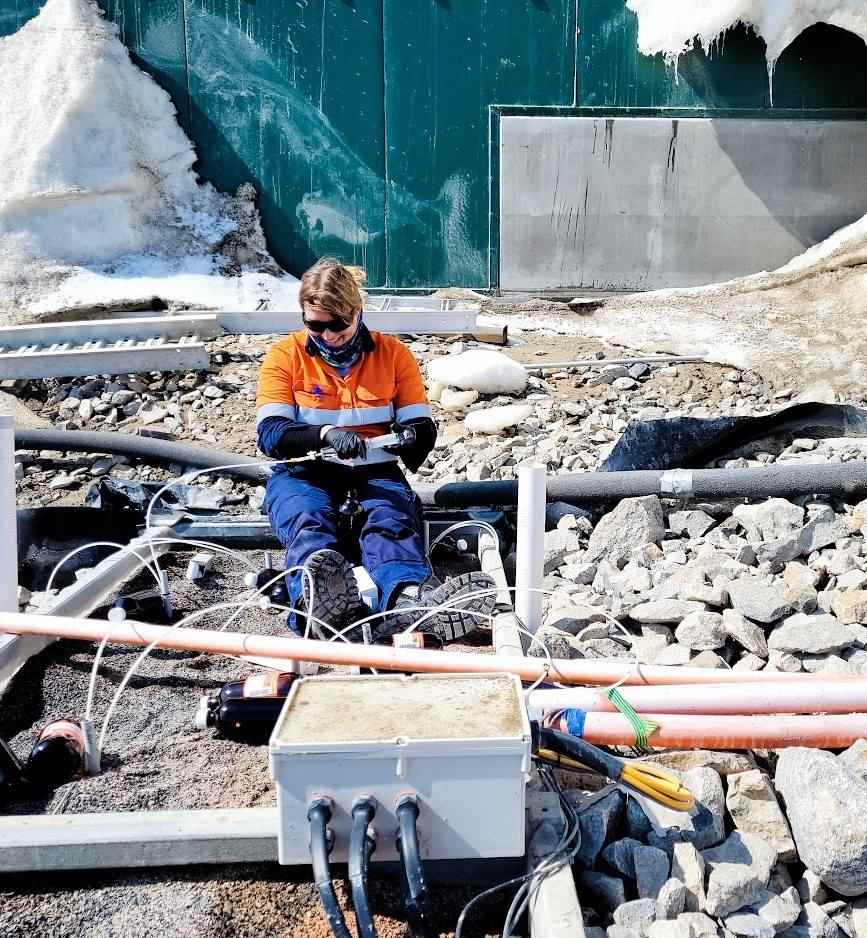
Kasey Williams, BEng
Discipline: Environmental Remediation
Age: 27
Nationality: Australia
Organisation: Australian Antarctic Division
Regional focus: Antarctica
Social media: LinkedIn
What’s the work that you do?
I work in environmental remediation, actively remediating legacy contamination at Antarctic stations whilst assisting in the development of new remediation technologies to improve the efficiency of clean up efforts in polar regions. I work on field and desktop based components of an ongoing Fuel Spill Remediation project in East Antarctica. My role is extremely varied – one day I am operating a water treatment system to remediate hydrocarbon impacted waters, the next I am flying drones to obtain high resolution imagery and data from our remediation sites and the next I am drilling tens of metres into the ice to determine the spatial distribution of a historical fuel spill underneath!
What keeps you going?
Being able to see the positive impacts of the work in front of my own eyes is a huge motivator. I love that the work our team does is extremely hands-on and practical and that our research provides guidance to other nations to learn and adopt our remediation strategies across the continent. These elements combined with the unique and extreme environment that we are privileged to live and work in and the incredible team I work with at the AAD continues to drive me to conduct high quality science.
What’s your message to the world?
Environmental remediation is not just about playing around in the dirt in Antarctica! It contributes to the restoration of our precious Antarctic environment, which is so important for our planet’s ability to regulate climate. Each day in the field we see the alarming impacts of climate change occuring in real time, and whilst our Fuel Spill Remediation work has had considerable impact on mitigating the risks of hydrocarbon contamination for marine and freshwater ecosystems at Casey Station, we need our entire planet to take steps to reduce our overall global environmental impact. We must all do our bit, no matter how big or small, to preserve Antarctica and subsequently the Earth as we know it.
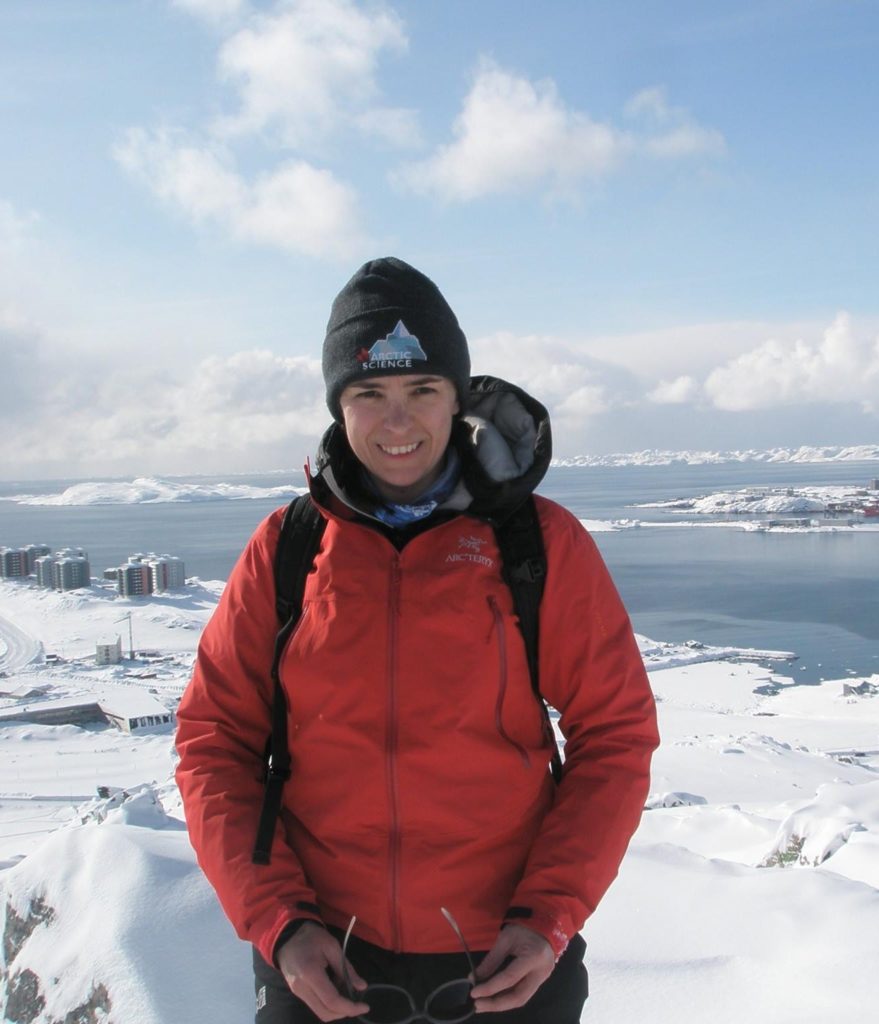
Caroline Bouchard, PhD
Discipline: Biological oceanography
Age: 42
Nationality: Canada
Organisation: Greenland Institute of Natural Resources (Greenland)
Regional focus: Arctic
Social media: ResearchGate
What’s the work that you do?
I am currently senior researcher at Pinngortitaleriffik, in Nuuk, Greenland in the fields of biological oceanography and marine ecology. One of my objectives is to better understand arctic zooplankton and ichthyoplankton, and to determine how climate change is affecting their populations and their interactions. Central to my research is the Arctic cod, a key species in Arctic marine ecosystems that I have been studying for 20 years. I use a variety of techniques and knowledge systems, including Inuit traditional knowledge, natural sciences, social sciences, and citizen science, to study arctic marine ecosystems, and, ultimately, the communities intrinsically connected to them.
What keeps you going?
One day I can analyze CTD data, the next I can interview fishers. I like combining approaches to answer my questions, and I like all parts of my work: field, lab, office, meetings, classrooms, etc. I enjoy disseminating scientific advances in my field outside of academic circles, through outreach activities and publications in diverse media. The most rewarding aspect of my career is contributing to train and mentor the new generation of Arctic scientists. At the end of the day, I hope that my research can help to preserve Arctic ecosystems for the well-being of people living in the Arctic.
What’s your message to the world?
There are loads of competent women in polar science, at all levels. Addressing gender bias and other factors behind the leaky pipeline should be a priority for the polar science community. Believe in your competence, believe in other women’s competence, and be absolutely convinced that science would be better served by closing gender gaps in senior ranks.
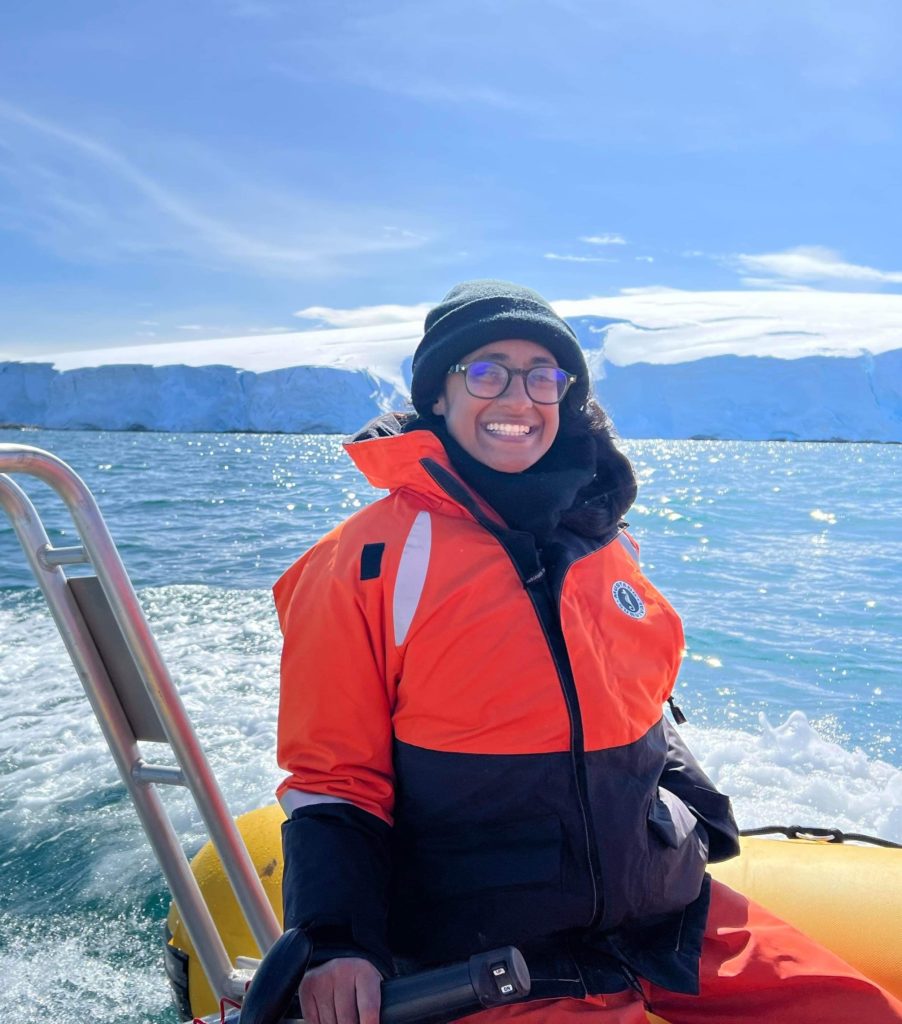
Sneha Sivaram
Discipline: Polar phytoplankton ecology
Age: 25
Nationality: USA
Organisation: Rutgers University New Brunswick (USA), Palmer Station LTER, Université Laval (Canada)
Regional focus: Arctic and Antarctica
Social media: Instagram and Twitter
What’s the work that you do?
I work on all things polar phytoplankton! My current master’s research at a Université Laval is focused on the adaptations of Arctic marine phytoplankton to extreme low light through physiology and transcriptomics. I also work as the field team lead for the Long Term Ecological Research (LTER) at Palmer station, monitoring seasonal phytoplankton dynamics.
What keeps you going?
I am driven by my curiosity and need to understand the world around me. My interest in the extreme adaptations of polar organisms quickly turned into an obsession, and I am truly privileged and thankful to be working and learning in some of the most incredible environments on the planet.
What’s your message to the world?
Science requires interdisciplinary thinkers. Collaboration and discourse support scientific advancement. Together we can achieve more and enact meaningful change!
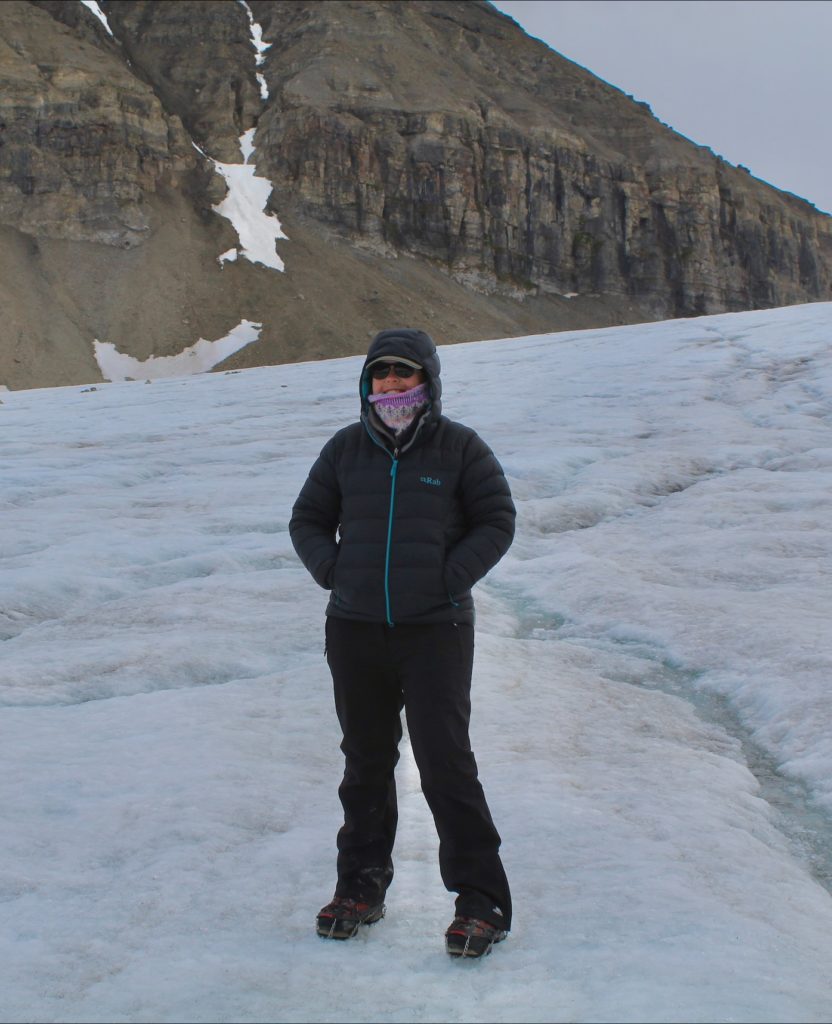
Emily Broadwell, MESci
Discipline: Glacial microbiology
Age: 25
Nationality: UK
Organisation: University of Bristol (UK)
Regional focus: Arctic and Antarctica
Social media: Twitter
What’s the work that you do?
I’m currently a PhD researcher part of the MicroLab@Bristol. My work focuses on global communities of snow and glacier algae. These microalgae are found in snowpacks and ice surfaces respectively across the cryosphere. I look at the photosynthesis of these species specifically to tell us about how they are adapted to these high light, low temperature environments. I also look at the cell health (carbon and nitrogen content) to see how these species are adapted to the low nutrient conditions found in these environments.
What keeps you going?
One of the best parts of my research is that it allows me to travel all over. We have been to the Alps several times and most recently spent a month up in Ny Ålesund in Svalbard. Seeing the different communities and getting to know so many amazing people is an amazing experience. I also teach as part of my PhD scholarship and get to work on field trips both in the UK and abroad. Getting students out into the field in the Alps every year is also a lot of fun.
What’s your message to the world?
The environments that we work on are rapidly changing, so it is important that we try and capture these communities as they are now before they are lost.
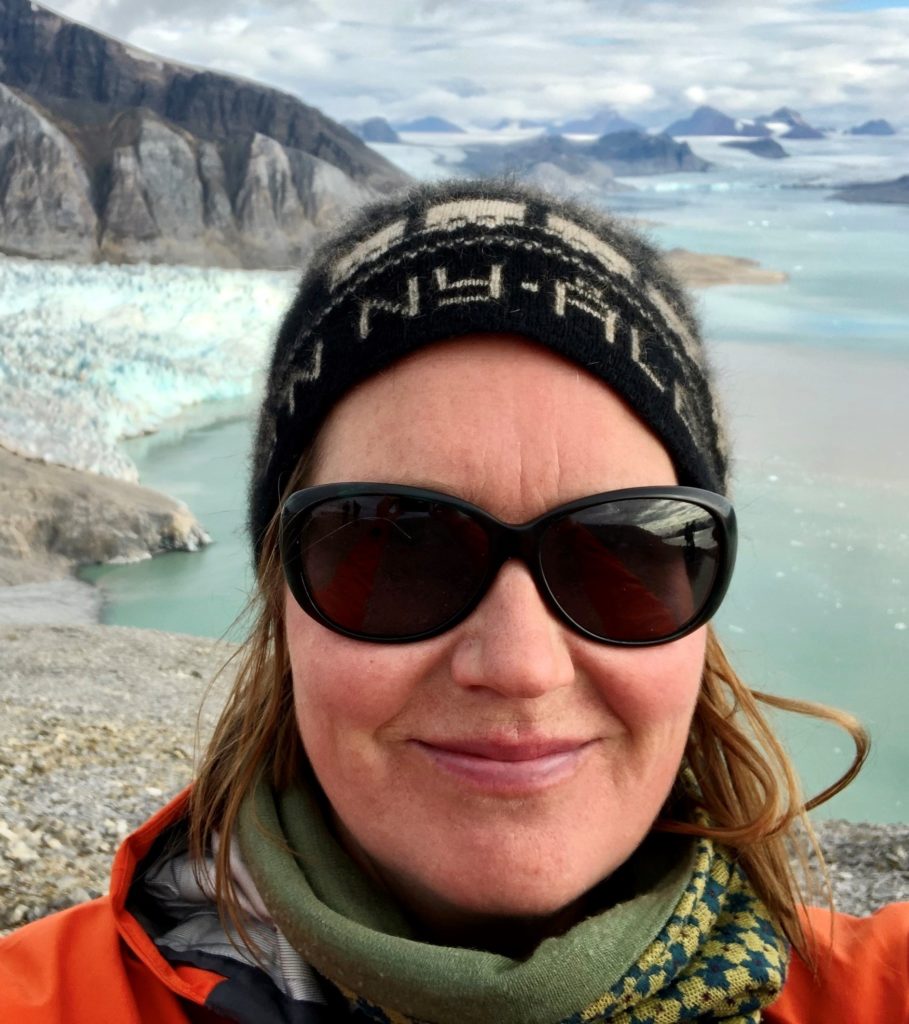
Christina A. Pedersen, PhD
Discipline: Managing and supporting research
Age: 46
Nationality: Norway
Organisation: Norwegian Polar Institute (Norway)
Regional focus: Arctic and Antarctic
Social media: Twitter and Twitter
What’s the work that you do?
I’m senior advisor and project leader in the research department at the Norwegian Polar Institute. My main area of concentration revolves around a major Norwegian infrastructure endeavor known as the Troll Observing Network. The initiative aims to establish eight observatories in Antarctica spanning the domains of atmosphere, cryosphere, biosphere, and geosphere and streamlining data accessibility for researchers. In addition, I play a significant role in coordinating and facilitating research activities in Svalbard, actively participating in Ny-Ålesund flagship programs and serving on the Ny-Ålesund Science Managers Committee (NySMAC).
What keeps you going?
My proficiency in mathematics and science during my academic years led me to pursue a master’s degree in applied physics, followed by a doctoral degree in statistics. However, my professional journey subsequently evolved into science management, a role I’ve come to deeply appreciate. I’ve found immense fulfillment in orchestrating and enabling research endeavors, recognizing that my impact extends further through coordination and facilitation than through individual research pursuits. This sense of purpose fuels my dedication to my current role.
What’s your message to the world?
In the face of pressing global challenges like climate change and biodiversity loss, our polar regions serve as critical indicators of the profound shifts happening on our planet. To understand and address these changes, we must prioritize long-term data collection and global collaboration. By working together and making the most of our shared knowledge, we can take meaningful steps toward a sustainable future for all. I’m proud to contribute my part, even if it is small, to this vital effort.
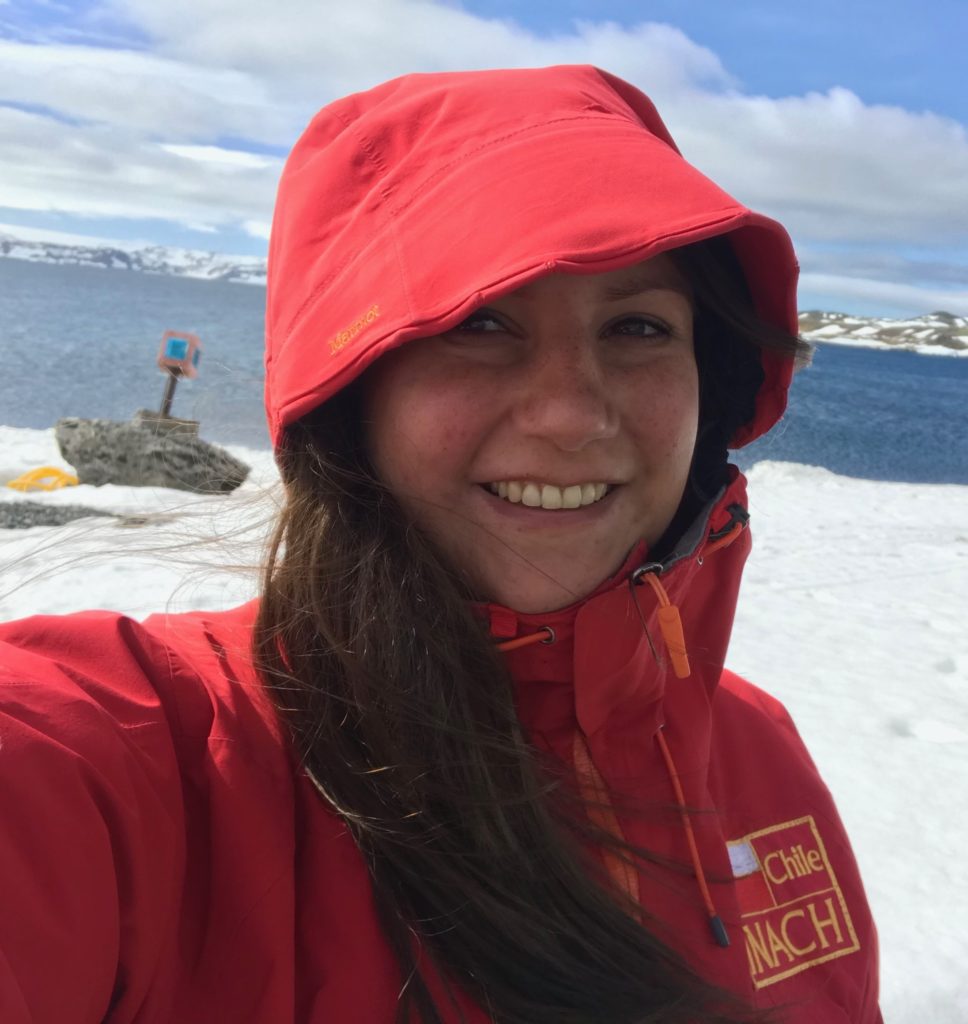
Thais Luarte, PhD
Discipline: Environmental pollution
Age: 34
Nationality: Chile
Organisation: Andrés Bello University (Chile)
Regional focus: Antarctica
Social media: ResearchGate
What’s the work that you do?
Currently, I am an assistant professor at the Universidad Andrés Bello. I am dedicated to researching the biogeochemical cycles of Persistent Organic Pollutants (POPs) in Antarctica. We analyze the concentrations of POPs in various environmental matrices, such as air, water, sediments and plankton, to understand their behavior and detect possible secondary sources in polar areas, specifically Antarctica. We plan to extend our study by evaluating POPs concentrations in snow and terrestrial sediments, with the aim of obtaining a complete picture of the POPs cycle in these areas.
What keeps you going?
In the first place, teaching is an enriching task that allows us to transmit our knowledge to new generations of professionals. Regarding research, I had the opportunity to visit the Antarctic continent three times, being amazed by its icy and moving landscapes, as well as its unique fauna. Contributing new knowledge through scientific publications is rewarding, as it helps to understand the processes that govern the environmental fate of POPs in polar areas. It also contributes to better management of environmental regulations.
What’s your message to the world?
My last visit to Antarctica, specifically to Union Glacier in December 2022, left a deep mark. This research station near the pole made me reflect on a comment I heard, “coming to Antarctica is like traveling to the Moon.” I felt deep gratitude for having the opportunity to explore such a remote place, challenging patience, living with colleagues and logistical staff in close proximity, and facing extreme weather conditions. Each day was a reminder of how fortunate I was to wake up healthy in an inhospitable environment, stepping on ground that was virgin to humanity. Research in polar regions is crucial because of the invaluable information we gain. Daily sampling, conducted in an environment that is hostile and inhospitable to life, generates crucial data, especially in the context of climate change. Each study calls for awareness of the importance of preserving our planet.
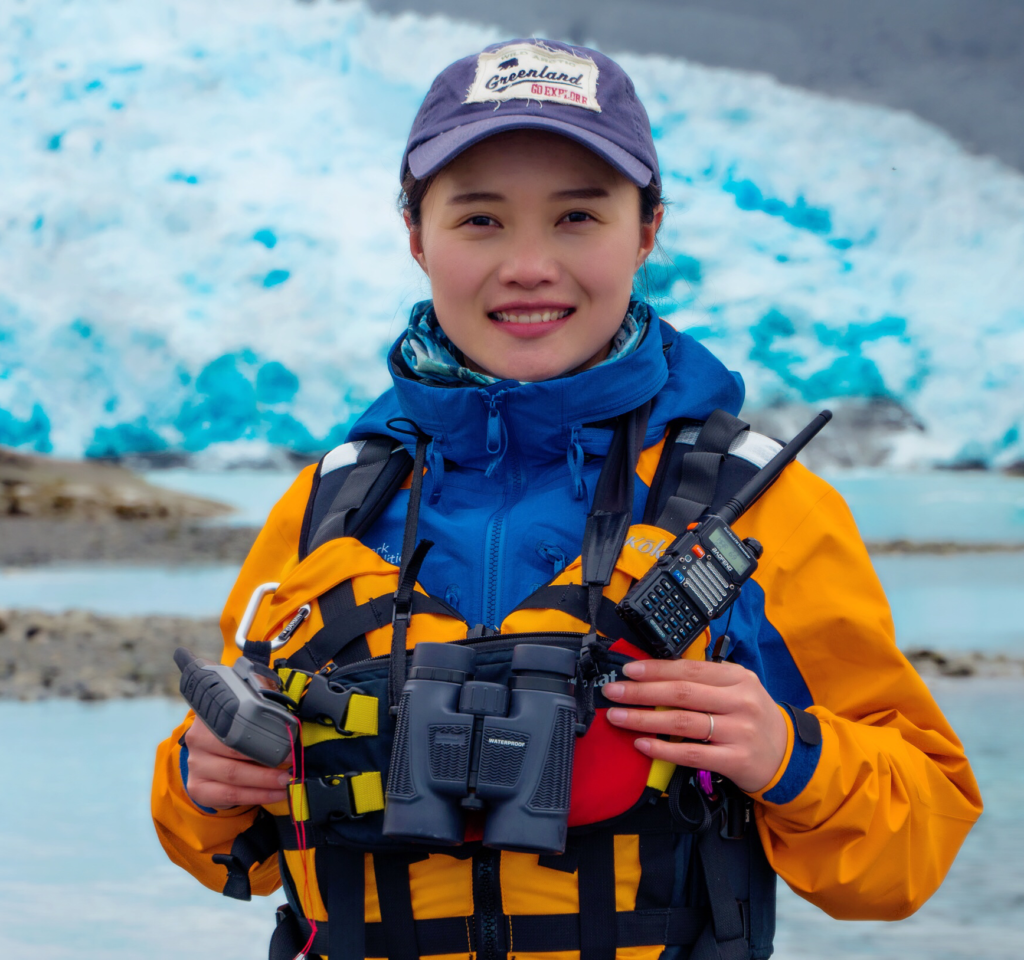
Chen Zhao, PhD
Discipline: Glaciology
Age: 33
Nationality: PR China
Organisation: Australian Antarctic Program Partnership, Institute for Marine and Antarctic Studies (IMAS), UTAS (Australia)
Regional focus: Antarctica
Social media: LinkedIn and Twitter
What’s the work that you do?
I am a glaciologist and also an ice sheet and ocean modeller. I started my studies on Antarctic science in 2011 and relocated to Hobart, Australia 7 years ago for my PhD studies. My current research interests aim to explore the sea level contributions from the Antarctic Ice Sheet in a changing ocean and evaluate the impact of ocean systems on large ice sheets with numerical modelling.
My experience in the polar regions has inspired me to devote myself to delivering knowledge about the impact of climate change on the polar regions to a broader audience. I have worked as a lecturer and expedition guide on cruises to the Antarctic Peninsula in the south, Greenland, Iceland, and Svalbard in the north.
What keeps you going?
I began my work in polar science because of my desire to see and feel the pure white land at the end of the Earth. When I learned more about the Antarctic in the course of my research, I felt excited and enthusiastic about how the data and models can tell us the truth behind climate change. I feel sad that some people don’t even care about the melting ice, the rising sea level, and the changing climate.
The incredible trips to the Antarctic and Arctic and the impressive nature of the polar regions have inspired me to keep doing my research on the Antarctic. I want to tell you what I found out about the polar regions, I want to protect it in my own little way and hope more of you will join me that way.
What’s your message to the world?
Ice is melting. Sea level is rising. Act on climate change now and we can make a difference.

Andrea Hirmas, MSc
Discipline: Trophic ecology, ecotoxicology
Age: 30
Nationality: Chile
Organisation: Universidad Andrés Bello and Universidad Mayor (Chile)
Regional focus: Antarctic
Social media: Instagram and ResearchGate
What’s the work that you do?
My work in Antarctica focuses on the study of persistent organic pollutants (POPs) in marine systems, mainly, in their presence in the different abiotic compartments such as air, water, sediment and soils, and in the trophic transfer of these pollutants between different organisms present in the water column. I want to understand the flux of these substances from the environment to the organisms, and to determine if the mitigation measures created to regulate the emissions of POPs into the atmosphere (such as the Stockholm Convention) have caused any impact on the decrease of POPs concentrations in Antarctic ecosystems.
What keeps you going?
Polar science has allowed me unique opportunities to combine my career and research with the Antarctic continent, presenting me with endless challenges that allow me to be in constant personal and professional growth. Being able to visit and work in Antarctica, dive in its waters and explore its landscapes has been a privilege that has also allowed me to surround myself with people who share the same passion about research, pushing me to keep asking questions and to go deeper into my curiosity. This allows us to continue developing the research we do in these polar ecosystems and to be able to share our findings and conclusions with the world.
What’s your message to the world?
Science is a difficult career, very competitive. You must constantly be aware of the new discoveries that appear every day. It is important to never forget your own approach, not to compete but to collaborate, gather and share knowledge, never forget to respect your colleagues and all those people who collaborate and support us in making it possible to carry out our work.
Always trust yourself, your knowledge, always give your best effort and above all be grateful for all the opportunities that working in polar ecosystems presents us, since they are once-in-a-lifetime opportunities.
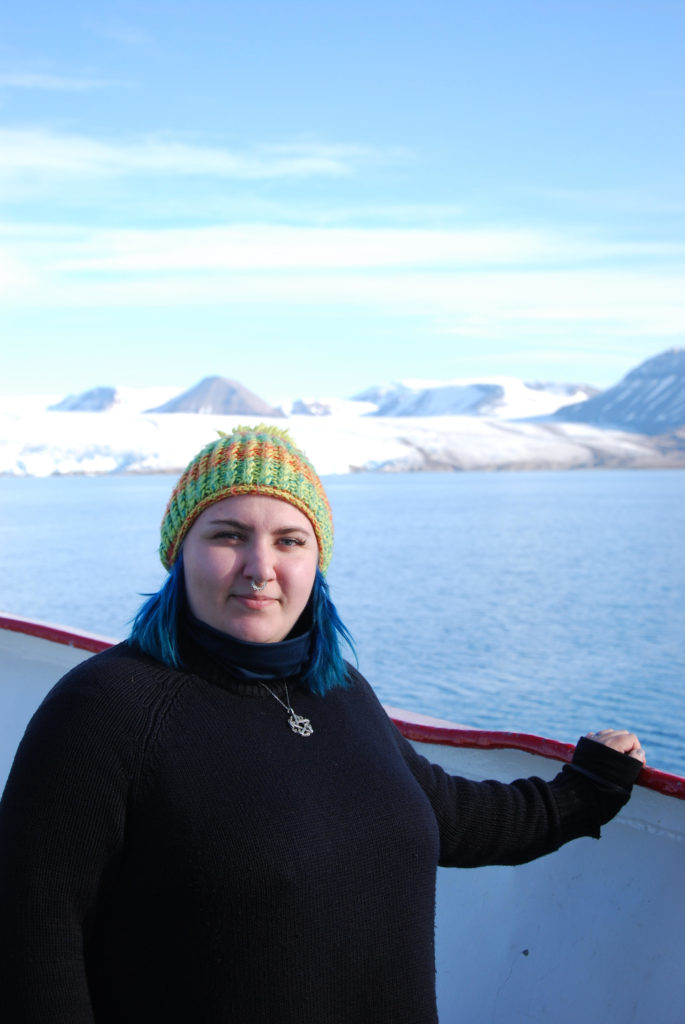
Anna Sowa, MSc
Discipline: Marine biology
Age: 28
Nationality: Poland
Organisation: Institute of Oceanology, Polish Academy of Sciences (Poland)
Regional focus: Arctic
Social media: Instagram and ResearchGate
What’s the work that you do?
My current work as a PhD student is focused on long-term changes in the process of recruitment of epibenthos on hard bottoms in the Svalbard region. Because you can’t really dredge a hard substrate for samples without damaging your gear, we used experimental constructions holding settlement plates at the bottom of Isfjorden. They ensure replicable results and allow a comparison of the assemblage composition over the years. I’m happy to see a move toward less invasive methods in the field studies. Before my doctoral project, I was researching the seasonality of benthic larvae settlement. I also took part in a few research cruises to the Arctic collecting a wide range of samples for projects I was directly involved in as well as some for my colleagues.
What keeps you going?
I love being in the field, collecting samples and analyzing them. Working with organisms and trying to identify them is my favorite part of the job. But I also love the people that I came across along the way. Also, I get a lot of inspiration from popular science books, especially those written by scientists. I really want to get better at communicating science – it’s definitely a useful skill.
What’s your message to the world?
We need to care about the world around us. Sometimes just taking a moment to spend some time in nature (as simple as a walk through a park on the way to work) can help build that connection.
